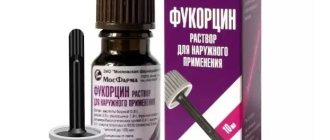Pharmacodynamics and pharmacokinetics
Sondox, a member of the ethanolamine group, is a histamine H1 receptor blocker. Its active component, doxylamine succinate, has an M-anticholinergic and sedative effect. During treatment, a decrease in the duration of falling asleep was noted, the period of sleep increased, and its quality improved without affecting the phases.
Inside the body, doxylamine is absorbed into the gastrointestinal tract within an hour from the moment of oral administration of the tablets. At the same time, its maximum concentration in the blood plasma . The substance is able to penetrate the BBB and distribute in tissues and organs. Biotransformation of doxylamine occurs in the liver. In this case, 60% of the drug is excreted unchanged by the kidneys.
Sondox: instructions for use
The cost of the medicine is from 50 rubles.
The pills are taken orally half an hour before going to bed. Sondox instructions for use for adults – 1/2-1 pill per day in the amount of 7.5-15 mg. If necessary, the dose is increased to two tablets (30 mg).
Treatment time is 2-5 days. In old age, with kidney and liver diseases, it is recommended to reduce the dosage.
After taking Sondox you should sleep for at least 7 hours.
The use of doxylamine during pregnancy or breastfeeding is not prohibited, but only after medical advice. It should not be forgotten that the drug has sedative and atropine-like properties.
Contraindications for use
The drug is contraindicated for use in:
- angle-closure glaucoma;
- disturbances in the functioning of the prostate and urethra;
- children under 15 years of age;
- sensitivity to the drug;
- lactation.
As for the use of the drug during pregnancy , the treatment does not have a negative effect on the fetus, but it should be taken only after consultation with a doctor.
Interaction
With simultaneous treatment with Sondox and benzodiazepines, opioid analgesics, barbiturates, clonidine , antipsychotics and tranquilizers , the inhibitory effect on the nervous system may be enhanced. Combination with Atropine and other drugs from the group of M-anticholinergics increases the risk of developing various anticholinergic side effects, for example, dry mouth, difficulty urinating.
Side effects and overdose
If the dose is exceeded after taking Sondox, the pupils dilate, tachycardia, hyperthermia, impaired thermoregulation of the skin, xerostomia, and paralysis of the ciliary muscle occur. In this case, inhibition or excessive emotional excitement may appear.
If drug intoxication occurs in children, hallucinations, athetosis, and mental disorders may occur. Sometimes convulsions, severe myopathy develop and kidney function is impaired.
Immediately after an overdose, it is recommended to drink activated carbon (50 g). If necessary, anticonvulsant medications are prescribed and artificial ventilation is performed.
Possible adverse reactions:
- Dizziness
- Constipation
- Itching and rashes on the skin
- Daytime sleepiness
- Quincke's edema
- Difficulty urinating
- Accommodation disorder
- Drying of the oral mucosa
- Heartbeat
- Anaphylactic shock
- Hypotension.
Analogues of Sondox
Level 4 ATC code matches: Alora
Motherwort extract
Novo-Passit
Cardiovalen
Liked
Carmolis
Valerian tincture
Lotusonic
Relaxil
Persen Forte
Persen
Phytosed
Sedavit
Motherwort Forte Evalar
Dormiplant
Sedafiton
Peony tincture
Menovalen
Bromcamphor
Valerian rhizomes with roots
The main analogues are represented by the drugs Donormil and Sonmil.
Also have a similar effect: Trypsidan, Imovan, Barbital sodium and Gemineurin .
Reviews of Sondox
It should be noted that various forms of sleep disturbance bother many people. At the same time, some people go to specialists with this problem, while others try to solve it on their own. In any case, in each group there are both negative and positive reviews of Sondox, which are divided in almost equal numbers.
For example, when this drug is used for such a sleep disorder as the change of day and night, that is, during the day a person experiences fatigue and severe drowsiness , but at night, on the contrary, he feels cheerful, then the drug has a beneficial effect. At the same time, its effect manifests itself quite mildly, and in the morning a person feels that he is well rested, there is no heaviness in the head and other negative effects.
However, Sondox does not help everyone. In addition to the fact that there are reports of its complete uselessness, patients often talk about the development of side effects in the form of digestive disorders, depression of the nervous system, and so on.
Thus, it becomes clear that this drug is not suitable for everyone and can only be prescribed individually. Therefore, if you have any sleep problems, especially those related to nervous system disorders, you should first consult with your doctor.
INSTRUCTIONS FOR USE
Sondox® / SONDOX
Trade name of the drug:
Sondox®
Active ingredient (INN):
doxylamine succinate
Dosage form:
pills
Compound:
1 tablet contains:
active substance:
doxylamine succinate (calculated as anhydrous substance) 15 mg (0.015 g);
Excipients:
magnesium stearate, lactose monohydrate, potato starch, microcrystalline cellulose.
Description:
tablets are white or almost white, round in shape, with a bevel and a score.
Pharmacotherapeutic group:
antihistamines for systemic use.
ATX code:
R06A A09.
Pharmacotherapeutic group:
sleeping pills and sedatives.
ATX code:
N05C M.
Pharmacological properties
The drug has an antiallergic effect. Penetrates the central nervous system and has a pronounced sedative effect, therefore it is specially used as a hypnotic drug. A hypnotic drug of the ethanolamine class from the group of histamine H1 receptor blockers, it has a sedative and M-anticholinergic effect. Reduces the time to fall asleep, increases the duration and quality of sleep, without changing the sleep phases.
Doxylamine succinate is well absorbed from the digestive tract, biotransformation occurs in the liver. Passes into breast milk. The main part of doxylamine succinate (about 60%) is excreted unchanged in the urine, some in the feces.
Indications for use
Insomnia.
Directions for use and doses
Apply internally. For adults and children over 15 years of age, take ½-1 tablet of the drug per day 15-30 minutes before bedtime. Depending on the individual reaction of the patient, the dose of the drug can be increased to 2 tablets. The duration of treatment is from 2 to 5 days. If insomnia persists for more than 5 days, you should consult your doctor regarding the advisability of further use of the drug.
Side effects
Drowsiness in the morning (corrected by reducing the dose).
The atropine-like effect of the drug can be manifested by constipation, dry mouth, urinary retention and impaired accommodation; strong heartbeat; Allergic reactions are possible, including skin rashes and itching.
If any adverse reactions occur, you should consult a doctor.
Contraindications
Angle-closure glaucoma in the patient's or family history, disorders of the urethra and prostate with a risk of urinary retention, individual hypersensitivity to the components of the drug.
Restrictions on use:
lung diseases.
Proper safety precautions for use
Since the drug contains lactose, it is contraindicated in cases of congenital galactosemia, impaired absorption of glucose and galactose, lactase deficiency.
Like all hypnotics and sedatives, doxylamine succinate can exacerbate sleep apnea syndrome (an increase in the number and duration of breathing pauses). H1-antihistamines should be used with caution in elderly patients due to the risk of dizziness, which may increase the risk of falls (eg when getting up at night) with consequences that are often serious in this population.
To prevent drowsiness during the day, it is necessary to take into account that the duration of sleep after taking the drug should be at least 7 hours.
While taking the drug, you should avoid drinking alcohol.
If you wake up in the middle of the night after taking the drug, you may feel lethargic or dizzy.
Drug interactions
When used simultaneously with atropine and atropine-like drugs (imipramine antidepressants, anticholinergic antiparkinsonian drugs, atropine antispasmodic drugs, disopyramide, phenothiazine neuroleptics), side effects such as urinary retention, constipation, and dry mouth may develop.
When used simultaneously with other antidepressants that affect the central nervous system (morphine derivatives (painkillers, drugs used to treat cough and replacement therapy), antipsychotics; barbiturates, benzodiazepines; anxiolytics other than benzodiazepines; sedative antidepressants (amitriptyline, doxepin, mianserin, mirtazapine , trimipramine); sedative H1-antihistamines; centrally acting antihypertensives; others: baclofen, pizotifen, thalidomide) increases depression of the central nervous system.
Alcohol enhances the sedative effect of doxylamine.
special instructions
Use during pregnancy or breastfeeding
The drug is contraindicated during pregnancy or breastfeeding.
Children
Use for children over 15 years of age.
The ability to influence the reaction rate when driving a vehicle or working with other mechanisms
The drug affects the speed of psychomotor reactions, so you should refrain from driving vehicles or operating other mechanisms.
The drug should not be used after the expiration date and should be stored out of the reach of children.
Overdose
This is possible only when using large doses of the drug.
Symptoms.
The first signs of acute poisoning are drowsiness; signs of anticholinergic effects: dry mouth, sinus tachycardia; agitation, hallucinations, ataxia, incoordination, athetosis, convulsions. Symptoms occur in the given sequence, but in some cases the first symptoms of acute poisoning may be tremor and athetosis. Symptoms of atropinization are often observed - mydriasis and paralysis of accommodation, flushing of the facial skin, hyperthermia. If left untreated, coma may develop, accompanied by collapse. Even if seizures do not occur, acute doxylamine poisoning sometimes causes rhabdomyolysis, which may be complicated by acute renal failure. This muscle disorder is common and requires systematic screening by measuring creatine phosphokinase activity.
Treatment.
Symptomatic. When starting treatment early, it is recommended to use activated carbon (50 g for adults, 1 g/kg for children). Provide artificial ventilation and prescribe anticonvulsants.
Release form
10 tablets in a blister. 1 or 3 blisters per pack.
Storage conditions
Store at a temperature not exceeding 25°C.
Best before date
5 years.
Conditions for dispensing from pharmacies
Over the counter.
Name and location. 61010, Ukraine, Kharkov, st. Gordienkovskaya, 1.
Sondox price, where to buy
The price of Sondox in Ukrainian pharmacies starts from 62 UAH. You can order medicine from online pharmacies at a cost of 150 rubles.
- Online pharmacies in UkraineUkraine
Pharmacy24
- Sondox 0.015 g No. 30 tablets PAT "Khimfarmzavod" Chervona Zirka", Kharkov, Ukraine
58 UAH. order - Sondox 0.015 N10 tablets PAT "Khimpharmzavod" Chervona Zirka", Kharkov, Ukraine
21 UAH order



